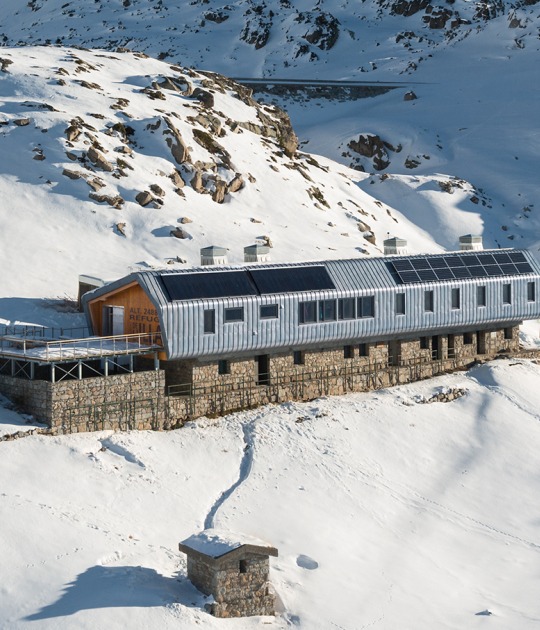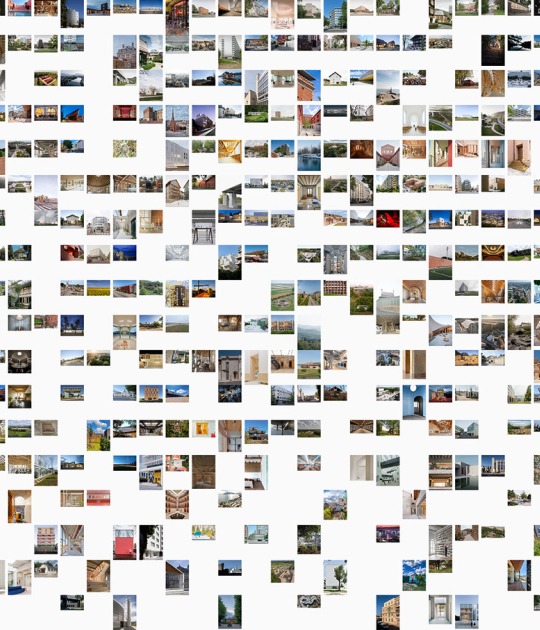Cini Boeri graduated from the Politecnico di Milano in 1951, alongside just two other female. She took an internship at Gio Ponti’s studio, before working for Marco Zanuso across architecture and industrial design until 1963 (designing the interior of a refuge for single mothers in the Lorenteggio neighbourhood of Milan), before opening her own studio, Cini Boeri Architetti, to focus on industrial design and architecture.
In the 1960s, she built a number of residences in Italy. The clifftop Casa Bunker and the spiral-shaped Villa Rotonda, both in Sardinia. The Casa nel bosco from 1969 was set in a birch forest in Lombardy, with an articulated shape to avoid having to fell the surrounding trees.
Designed showrooms around the world for Knoll, and taken interior commissions for banks, stores, villas and galleries, as her 1,500 square meter furniture shop, Mossel project in Bilbao, Spain, 1973.
Over the course of her career, Boeri collaborated with some of the biggest names in Italian design, including lighting brand Artemide and furniture makers Knoll, Magis and Arflex.
Her interest in industrial design and economy and her playful use of form and unexpected materials in her product and furniture design that have become her most enduring legacy.
Her 1098 and 602 lamps for Arteluce, which she made with PVC piping that allows the arms to pivot while creating a zany, cartoon-like appearance. The same is also of her monobloc foam Bobo chair from 1967 and Serpentone seating for Arflex from 1971, whose industrial material (polyurethane again) could be formed into endless snaking configurations and sold by the meter for indoor and outdoor seating.
The Ghost chair of 1987, made for FIAM, was designed out of a single 12mm thick glass sheet.
Between 1981 and 1983 she taught architectural design and industrial and interior design at Milan Polytechnic. Many of her published essays were concerned with domestic design and architecture. She joined the board of directors for the XVI Milan Triennale, and participated in the exhibition titled Domestic Project at the XVII Milan Triennale in 1986.
Boeri is survived by her three sons, Stefano, Sandro, and Tito
Coda. Her interest trained from her experience growing up during World War II. As a daughter to staunchly anti-fascist parents, at just 18 years old she was couriering important documents across the country for the opposition, and even sewed herself a skirt out of parachute material.
In the 1960s, she built a number of residences in Italy. The clifftop Casa Bunker and the spiral-shaped Villa Rotonda, both in Sardinia. The Casa nel bosco from 1969 was set in a birch forest in Lombardy, with an articulated shape to avoid having to fell the surrounding trees.
Designed showrooms around the world for Knoll, and taken interior commissions for banks, stores, villas and galleries, as her 1,500 square meter furniture shop, Mossel project in Bilbao, Spain, 1973.
Over the course of her career, Boeri collaborated with some of the biggest names in Italian design, including lighting brand Artemide and furniture makers Knoll, Magis and Arflex.
Her interest in industrial design and economy and her playful use of form and unexpected materials in her product and furniture design that have become her most enduring legacy.
Her 1098 and 602 lamps for Arteluce, which she made with PVC piping that allows the arms to pivot while creating a zany, cartoon-like appearance. The same is also of her monobloc foam Bobo chair from 1967 and Serpentone seating for Arflex from 1971, whose industrial material (polyurethane again) could be formed into endless snaking configurations and sold by the meter for indoor and outdoor seating.
The Ghost chair of 1987, made for FIAM, was designed out of a single 12mm thick glass sheet.
Between 1981 and 1983 she taught architectural design and industrial and interior design at Milan Polytechnic. Many of her published essays were concerned with domestic design and architecture. She joined the board of directors for the XVI Milan Triennale, and participated in the exhibition titled Domestic Project at the XVII Milan Triennale in 1986.
Boeri is survived by her three sons, Stefano, Sandro, and Tito
Coda. Her interest trained from her experience growing up during World War II. As a daughter to staunchly anti-fascist parents, at just 18 years old she was couriering important documents across the country for the opposition, and even sewed herself a skirt out of parachute material.





































